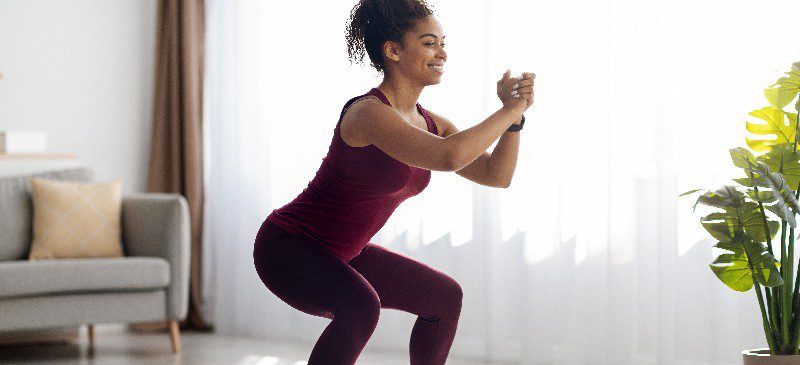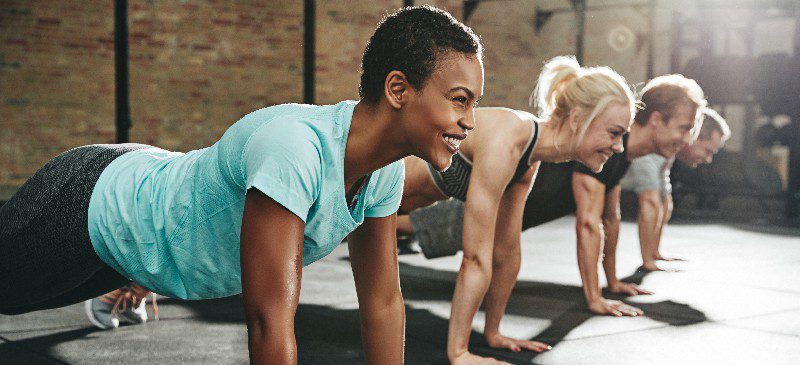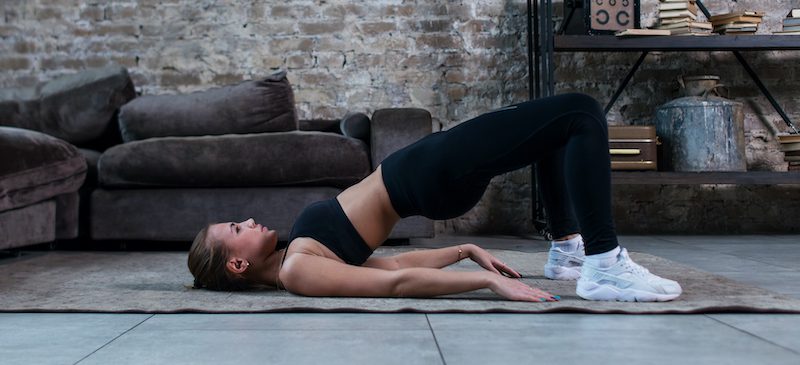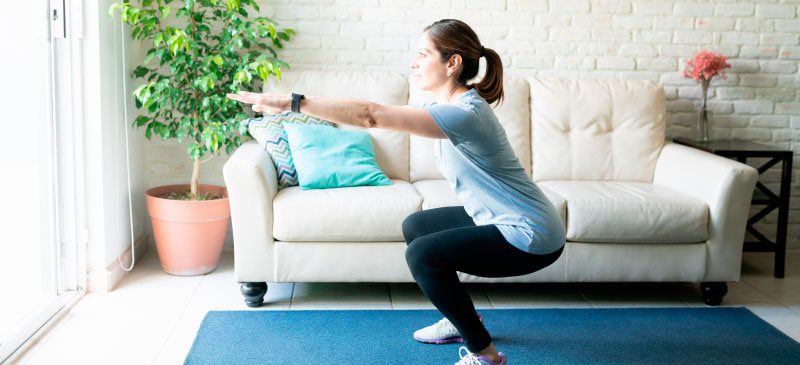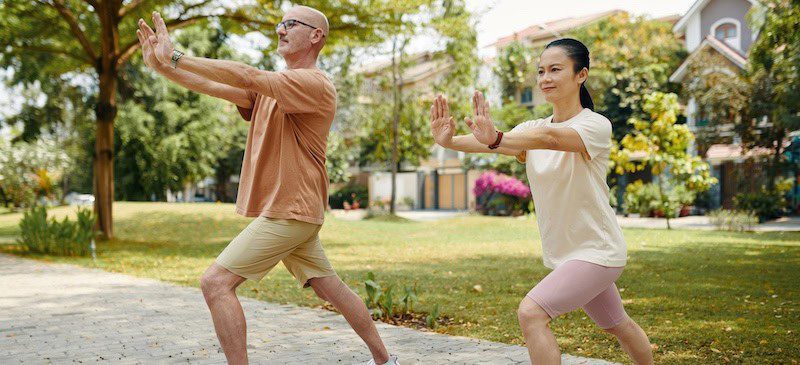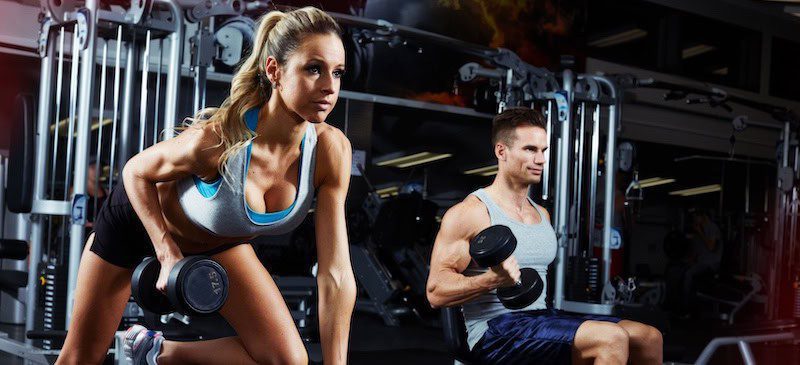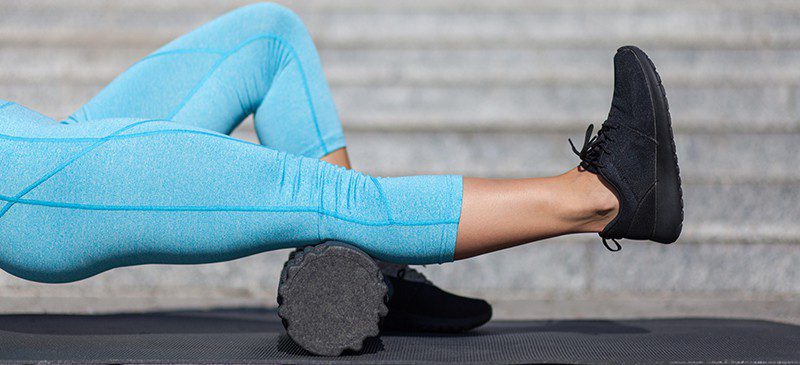

If you’ve ever been in a gym, sporting goods store or even the fitness aisle at a department store, you’ve probably seen a foam roller. If you felt confused about how to use one, you’re not alone. While becoming more mainstream, foam rollers and foam roller exercises still remain a mystery to many people and even trainers.
Foam roller exercises, which are used for myofascial release, are a form of massage that fitness-minded folks do either before exercise to loosen up sore muscles and tight joints or after a workout in an effort to aid muscle recovery.
Foam roller exercises and other self-myofascial release techniques have become increasingly popular, and for good reason. Partly that stems from a better understanding about the healing benefits of soft tissue care, or massage.
Massage can ultimately become cost-prohibitive since, unless you are an athlete or just have a few hundred extra bucks lying around, you probably opt infrequently for a massage as a luxury or a splurge more than a necessity.
Rolling yourself out on a foam roller becomes an affordable alternative to massage therapy. Those dense, round pieces of foam can deliver many benefits of therapeutic massage without the cost.

What is a foam roller?
A foam roller is a cylindrical, lightweight tube made of dense foam (or other resilient materials). It’s used as a self-massage tool to apply pressure to muscles, tendons and fascia.
When you lie or press your body against it and roll back and forth, you can release tension, trigger points and muscle adhesions.
What is foam rolling (and myofascial release)?
You might wonder what myofascial release means. Fascia is sort of like plastic wrap that covers pretty much every part of your body, composed of collagen fibers that surround and penetrate your muscles, organs and nerves.
Fascia essentially holds us together.
Of course, sometimes holding everything together can take its toll on your body. It’s no different for our fascia.
Through overtraining, it can become sore and restricted. Because of little tears that sometimes don’t heal properly, adhesions develop.
If the connective tissue surrounding your muscle becomes restricted, you’ll notice your muscles will also become restricted in their movement.
Myofascial release describes what happens when you apply pressure to the affected areas to eliminate adhesions and release tension, ultimately improving movement and restoring the body back to its natural state. Foam rolling and myofascial release encompass a wide range of modalities, including rolfing, massage and the Graston technique.
Foam rolling is a self-myofascial release technique (often abbreviated SMR). In “self-myofascial release,” “myo” refers to muscle, and “fascial” refers to the fascia, the connective tissue that envelopes muscles, nerves and organs.
The idea is that when fascia or muscles are too tight, they can develop “knots,” adhesions or restrictions. By applying sustained pressure (via a foam roller) to these areas, you encourage the tissue to release, relax and elongate.
How does it work?
When you hold pressure over a tight spot (trigger point) for a short duration (e.g., 20-60 seconds) or roll slowly around it, neural receptors (like Golgi tendon organs and mechanoreceptors) send signals that modulate muscle tone, reducing tension. This can allow the muscle to lengthen and return to a more balanced state.
When and why to use it
- Pre-exercise (warm-up): Helps “wake up” tissue, increase flexibility and reduce stiffness before movement.
- Post-exercise (cooldown/recovery): Aids in flushing out byproducts, easing soreness and speeding recovery.
- On rest or recovery days: Helps maintain healthy tissue, prevent new adhesions and manage chronic tightness.
Common types of foam rollers
- Soft/low density: Good for beginners, very sore areas or sensitive tissue
- Medium/moderate density: A good “all-purpose” choice
- Firm/high density (or textured): For experienced users who want deeper pressure
- Textured rollers (grid patterns, ridges): Can concentrate pressure in certain lines or simulate massage tools
- Length options: Short (12 inches) rollers are more portable, while full-length (36 inches) rollers allow you to roll your full spine
Safety and cautions
- Avoid rolling directly over bones, joints or inflamed tissue.
- Don’t spend excessive time on very tender spots. (Limit to 30-60 seconds.)
- Be cautious around the lower back (lumbar spine). It’s often better to roll adjacent areas, like the glutes, hips or thoracic spine, instead.
- Avoid foam rolling after recent injuries until cleared by a health professional.
Benefits of foam rolling
Foam roller exercises are among the simplest, low-cost and highly effective tools you can add to your wellness routine. Whether you’re a fitness enthusiast, athlete or simply someone seeking relief from tight muscles, foam rolling offers unique benefits.
Here are some compelling reasons to begin incorporating foam roller exercises into your weekly program:
1. Improved flexibility and increased joint range of motion
For years, stretching was the standard method to decrease muscle tightness and improve flexibility prior to either working out or performing a sport. Newer research, however, has revealed that foam roller exercises before an activity can lead to an increase in flexibility.
Foam rolling helps release adhesions and “knots” in connective tissues (fascia), which can otherwise limit mobility. By loosening tight areas with foam roller moves, you support better flexibility and joint function in your workouts and daily life.

2. Better circulation
Because blood carries oxygen throughout the body, good circulation becomes crucial to overall health. Among other reasons, a decrease in circulation can lead to a whole host of problems, like numbness in the limbs, impaired cognitive ability (the ability to think clearly!) and a weak immune system.
Myofascial release can help improve circulation by breaking up the tight areas where blood flow may become restricted.
When you apply sustained pressure to soft tissue, you stimulate blood flow and nutrient delivery to the muscles and fascia. This improved microcirculation contributes to healthier tissue, faster repair and more resilience under stress.
3. Stress reduction
Foam roller exercises can help reduce stress post-workout. A study published in the Journal of Physical Therapy Science found that myofascial release can lower cortisol, your stress hormone.
This is big because you want to seriously dial down your cortisol levels after a strenuous workout since research shows vigorous exercise can raise levels of this major stress hormone.
4. Reduce exercise-related soreness
Whether you are an experienced athlete or a weekend warrior, you’ve probably experienced delayed onset muscle soreness (DOMS). Simply put, DOMS is the pain and stiffness in your muscles that can typically set in anywhere from 24-48 hours after an intense workout.
However, research has found that foam rolling can substantially reduce the chances of that soreness creeping in so you don’t spend the day after your first cycling class stuck on the couch wondering why your legs hate you so much.
After an intense workout, your muscles may feel heavy, stiff or “tight.” Self-myofascial release via foam roller exercises can promote circulation, flush out metabolic waste and help muscles relax more quickly.
Many people find that foam rolling helps reduce DOMS faster than passive rest alone.
5. Prevent injury
Treating an injury becomes much easier when you avoid it in the first place. Oftentimes a consistent routine of proper stretching techniques combined with foam roller exercises can prevent many injuries associated with tightness and overuse, such as iliotibial band syndrome and other common running injuries.
The iliotibial band runs from the top of the leg by your hip to just below your knee. It tends to be particularly susceptible to injury, especially in runners.
One caveat: If not done properly, foam rolling can do more harm than good. Rolling on an already inflamed area can actually increase inflammation, thereby giving you the exact opposite effect you are trying to achieve.
This is why proper technique is crucial.
6. Less chronic tension and pain
Many chronic aches stem from overly tight muscles, posture imbalances or stuck fascia. Foam rolling can act as a self-massage tool to help loosen the tension in areas like the calves, hips, quads and back, potentially alleviating persistent stiffness or nagging pain.
7. Convenient, versatile and cost-effective
A foam roller is inexpensive, portable, and easy to use at home, in the gym or while traveling. With just a few minutes per muscle group, you can integrate foam roller exercises into warm-ups, cooldowns or recovery routines.
Foam roller exercises
Now that you have a pretty solid understanding of exactly what foam rolling is and how it can benefit you directly, you are probably wondering how to incorporate foam roller exercises into your fitness routine.
Ideally, the following foam roller exercises should be done for about a minute on each area to allow the muscle to relax. As you roll, take some slow, deep breaths. We have a tendency to hold our breath when we are concentrating on something, especially when something feels new to us.
Remain mindful of your breathing during this process.
Hamstrings and glutes
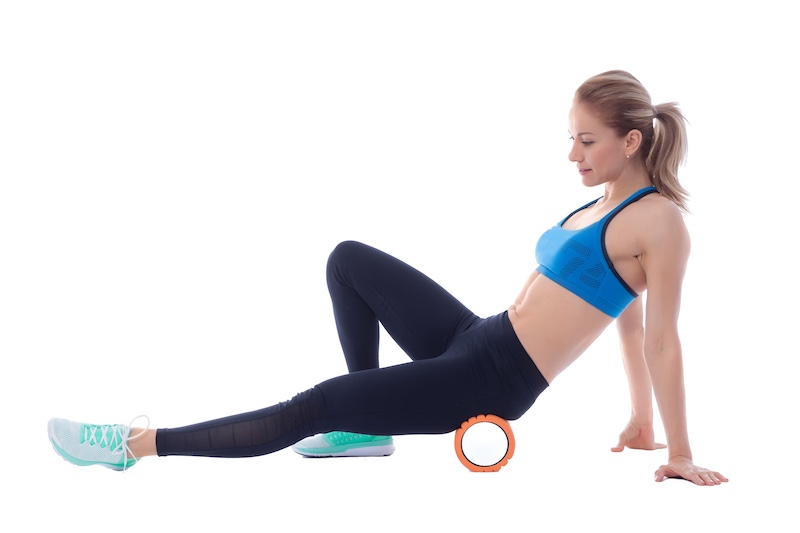
So many of us have extremely tight hamstrings from sitting at our desks all day, which can cause lower back pain. It’s why you can benefit from hamstring stretches and exercises that involve a foam roller.
To roll out your hamstrings and glutes, start by sitting on the floor and placing the foam roller long ways underneath your legs. You will use your arms to support yourself, and adjust how much pressure you are applying to your legs. The more bodyweight you transfer to your arms, the easier things will be on your hamstrings.
If you feel like you need to put more pressure on your hamstrings, simply shift more of your bodyweight to your legs and less in your arms. You will want to just roll yourself along the roller from your glutes down to just above your knees.
Again, spend about a minute here, and make sure you’re not holding your breath.
Quadriceps
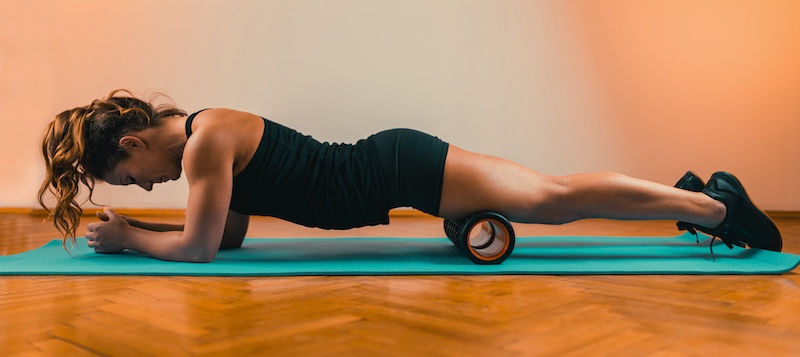
The front of our legs can certainly become sore and tight. Balance becomes crucial, so if you’re going to work on those hamstrings, turn over and give equal attention to your quads.
To do this, place the foam roller underneath your legs, and with your bodyweight on your forearms, begin to roll yourself back and forth from the top of your knees to your pelvic bone. You will want to keep your abs engaged on this one, and keep your feet off the floor as you’re rolling.
Iliotibial (IT) band
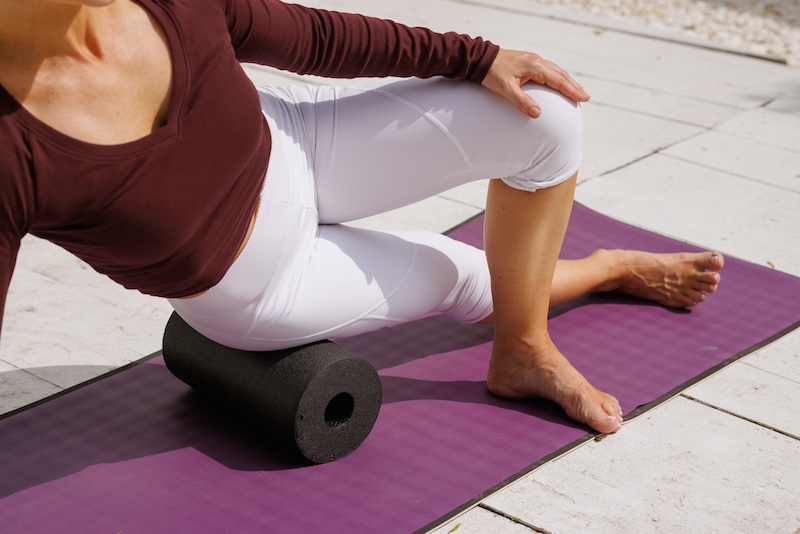
Although IT band issues are usually associated with runners, everyone can be affected with IT band issues that can result in knee and lower back pain. You need to begin working on knee strengthening exercises as well as foam roller exercises for the IT band.
To roll out your IT band, you’ll want to position yourself with the side of your leg on top of the roller. You can take some of the pressure off the IT band directly by transferring your bodyweight to your arms as you roll from just below your hip to the top of your knee and keeping your other foot on the ground so your opposite leg supports you.
Upper back
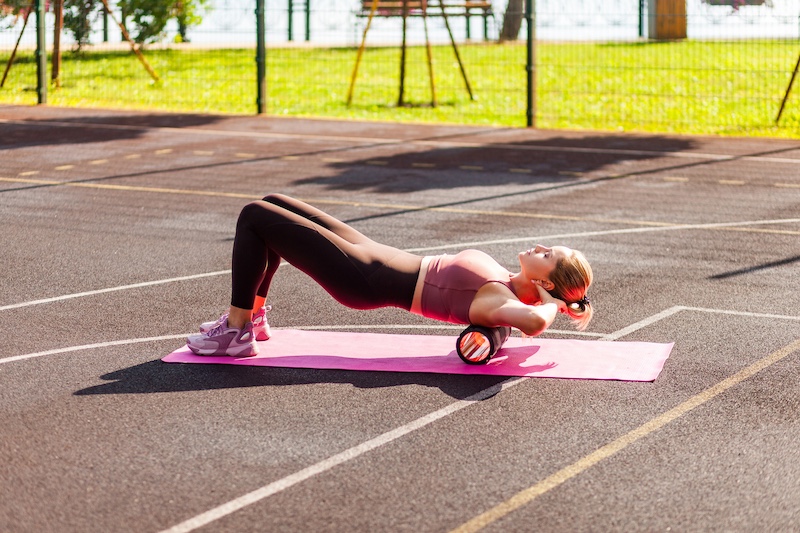
We sit a lot, which can take its toll on our upper backs. This exercise becomes a great way to loosen up knots associated with phones that won’t stop ringing and rush-hour traffic that won’t move when you have a car full of crying kids and a pint of ice cream melting over all your other groceries.
Place the foam roller perpendicular to your body, and lean your upper back against it. Place your hands directly behind your head, lift your hips off the floor and gently begin to roll from the top of your shoulder blades to the middle of your back.
You also can perform foam roller exercises on the hip flexors, calves, lats, shoulders, neck … pretty much anywhere there is a major muscle group on the body.
Precautions
As with most things, start slowly with your new foam rolling routine, and gradually increase over time. Try incorporating either before or after a workout a couple of times a week, and then go from there.
If you don’t currently have a workout routine, you can still reap all the benefits of foam rolling. Using one during commercial breaks of your favorite show becomes a great way to initiate foam rollers into your routine.
However, you want to make sure you avoid common foam rolling mistakes, such as speeding through foam roller exercises and spending too much time on sore spots.
I often see people rolling back and forth on a foam roller like it’s some sort of competition to see how quickly they can do it. Using a foam roller isn’t like racing to the finish line. You want to slow it down and give your muscles enough time to actually relax and begin to break up the adhesions in your fascia.
Additionally, can we permanently shelf the “no pain, no gain” mentality?
We are programmed to believe that if a little bit of something is good for us, then clearly more must be even better. As with many other things, that’s not the case with foam rolling.
Spending too much time (over, say, a minute) applying pressure directly on a knot means you might hit a nerve or damage the tissue, resulting in some nasty bruising. Spend about 20 seconds on a knot, and don’t try to be a hero by seeing how long you can take the pain.
Foam rolling also should be modified or avoided by people who have osteoporosis and by pregnant women. Osteoporosis causes bones to become brittle and fragile. The risk of breaking a bone could be increased by foam rolling.
Pregnant women release a hormone called relaxin. Relaxin allows the body to relax the joints, especially in the pelvis, to let the baby pass through the birth canal.
During pregnancy, stretching and foam rolling (especially if you are inexperienced) can actually cause more harm than good.
Frequently asked questions
Is foam rolling safe for everyone?
Generally, yes. Most healthy individuals can safely perform foam roller exercises.
However, avoid using a foam roller on bruised, inflamed or injured areas (recent sprains, fractures, open wounds). If you have a chronic condition (hernia, herniated disc, osteoporosis, circulation issues), consult your physician or physical therapist before using foam rolling techniques.
How often should I do foam roller exercises?
For many people, three to five times per week is ideal. You can do brief foam rolling sessions (about five to 15 minutes) daily if tolerated.
Focus on key muscle groups (calves, quads, glutes, back), and listen to your body. If a body part feels overly sensitive or aggravated, allow rest.
How long should I foam roll each muscle group?
A common guideline is 30 to 60 seconds per muscle group. Some research suggests 90-120 seconds per muscle group may yield more benefit in reducing soreness, but benefits plateau beyond that time frame.
Does foam rolling help with soreness (DOMS)?
Yes, many athletes and fitness enthusiasts report that foam roller exercises help reduce the perception of soreness after workouts. The mechanism involves improved circulation and modulation of muscle tension.
However, foam rolling is not a cure-all. It works best when combined with good hydration, nutrition, rest and proper training.
Should I foam roll before or after workouts?
You can do both. Foam rolling before workouts can help loosen tissue and improve mobility, while foam rolling after or later in the day aids recovery and reduces stiffness. Many practitioners favor doing foam rolling before static stretching, as it may enhance range of motion gains.
Why do my legs feel sore after foam rolling?
If your muscles are very tight or you applied too much pressure too early, foam rolling can feel uncomfortable the next day, similar to slight “massage soreness.” This usually subsides. Stay gentle, use modifications (less bodyweight on the roller), and gradually increase duration or intensity.
Can I foam roll every day?
In general, yes, if done mindfully and with moderation. Daily use of a foam roller is acceptable for many people, provided no exacerbation of discomfort or injury occurs. Always allow your tissues time to adapt, and rest when needed.
How hard should foam rolling feel?
You should feel a firm, moderate pressure. It may be uncomfortable in tight spots, but it shouldn’t be excruciating.
Use your breathing and body relaxation to help tolerate pressure. If it’s too painful, reduce pressure (by supporting more weight on your limbs or using a softer roller), or stop.
Can foam roller exercises improve posture?
Indirectly, yes. By releasing tight muscles in the chest, lats, hips and thoracic spine, foam rolling can help restore balance in your musculoskeletal system. When combined with strengthening and postural correction exercises, it may assist in improving posture over time.
Final thoughts
- Foam rolling can become a great tool to have in your arsenal to feel better and prevent injury.
- It’s inexpensive, easy to use, and provides benefits for athletes and laypeople alike.
- Always pay attention to your body. If something doesn’t feel right or pain becomes worse, see your physician to determine the underlying problem.



